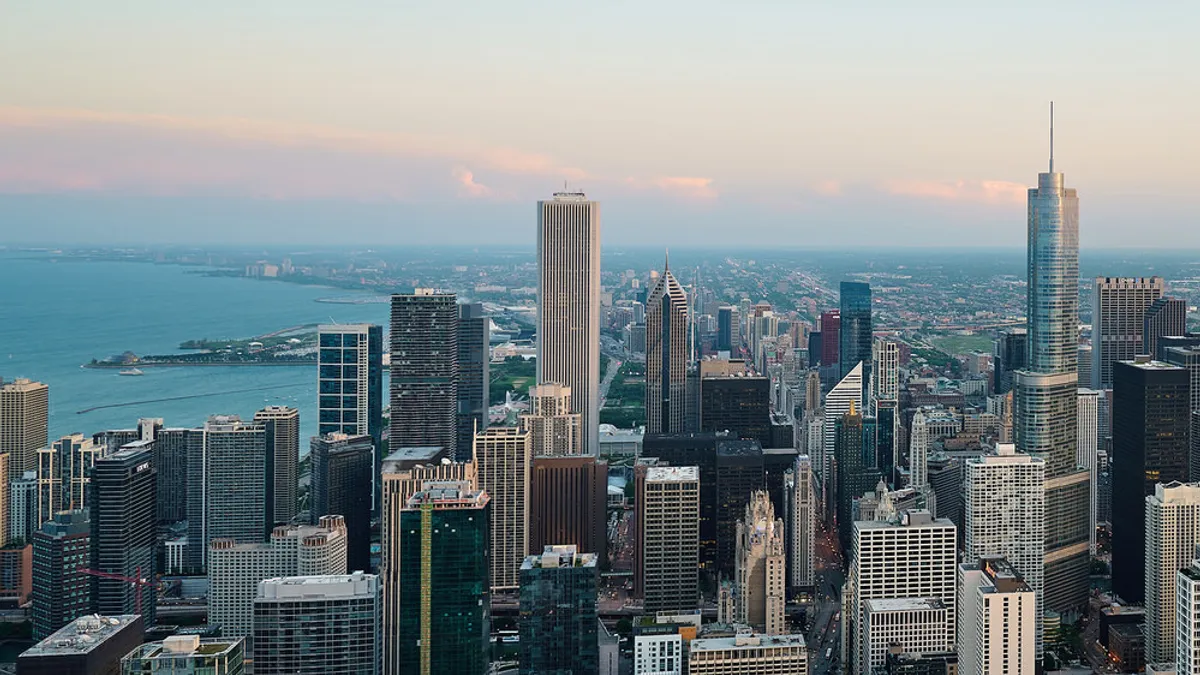Last week, industry leaders and economists convened at Dodge Data & Analytics’ Outlook Executive Conference at Maryland’s National Harbor to roll out predictions for the U.S. economy and construction markets in the coming year. The top finding of Dodge's report that was unveiled at the event is that total construction starts in 2019 will inch up to just over $808 billion from this year’s estimated $806.8 billion.
While a prediction that construction activity will be about the same doesn’t make for the most exciting news, what’s clear is that the economy is currently in a precarious tug and pull between growth stimuli like tax cuts and risks such as rising interest rates.
As the economy nears a tipping point to contraction, there are a few themes construction companies can anticipate and plan for, according to conference panelists, in order to both capture opportunity in the coming year and prepare for the storm ahead.
Don't be surprised if not much changes
The economy is certainly cooling off from the elevated growth rates we’ve seen in the past several quarters, including 4.1% in the second quarter of 2018, the fastest pace since 2014.
But this decline won’t have a pronounced impact on the construction industry for at least a year to come, according to Dodge’s projections. Construction spending levels are “rounding the peak,” said Chief Economist and VP Robert Murray, but he added that, “basically, the levels of activity we’re expecting in 2019 are not that different than what we saw in 2018.”
Still, some key indicators of economic health are hovering around levels that simply aren’t sustainable. The expected $808.3 billion value of 2019 construction starts is one example, but a subsequent decrease wouldn’t necessarily signal a transition to decline, Murray said, so much as a “deceleration to ... the enhanced level of activity that has been achieved over the past several years.”
But one indicator in particular is “flashing red,” according to Cristian deRitis, senior director of Moody’s Analytics, and contrary to what one might expect, that is the low unemployment level. Historically, “any time unemployment hovers around 4.5%, recession comes about three years later,” he said. The rate has been sliding down from this level since March of last year, according to Bureau of Labor Statistics data, and by Moody’s estimates, the economy is due for a slowdown in the summer of 2020.
Recession is impending, but it won’t look like the last one
While some have speculated that the economy can only grow for so long, there’s no science to the amount of time an economy can expand before it contracts. It’s possible that the U.S. economy could continue to grow without a fall in gross domestic product, according to deRitis, but it's unlikely based on the combination of present risks in the market.
For one, the Federal Reserve’s concern about overheating has translated into a program of boosting interest rates — a necessary evil to curb inflation — but it’s not been known to take the most conservative approach. “It’s always been a bumpy ride with the [federal government] making sometimes more aggressive policy then backing off,” deRitis said. Of the 13 rate hike cycles since World War II, CNBC reported, 10 have resulted in recessions.
And if current tensions between the U.S. and its largest trading partner, China, escalate to a full-blown trade war, the resulting inflation would drive even more aggressive policies from the Fed, he added.
But the U.S. economy is still recovering from the Great Recession, so whatever is to come can’t possibly be worse, deRitis said. While the back half of 2019 could feel very different than the start, we’re heading into a “garden-variety” type of recession, he said, and “as things slow down, we’re going to weather the storm pretty well.”
The labor shortage is something we have to live with
A full 80% of the 2,500 respondents to a recent Associated General Contractors of America and Autodesk survey said they are having a tough time filling hourly craft positions and 56% that filling salaried positions is a challenge. In addition, 81% of firms said it will continue to be hard or even get harder to find craft workers in the short term. These findings make it abundantly clear that the construction labor market has not recovered since the recession.
“This is a problem companies will have to live with for a long time,” said AGC Chief Economist Ken Simonson during a labor shortage panel, and there’s unfortunately no silver bullet to fix it. A small minority of contractors are using lean construction, building information modeling and other labor-saving methods, he said, but the majority is still aiming to get more work from the people they have.
Panelist Peter Ukstins, director of integrated construction at James G. Davis Construction Corp., expressed hopefulness that the labor shortage will drive innovative strategies. Contractors who are willing to provide some technical training in-house, for example, could benefit from bringing on workers that exceed in soft skills, he said, whom they may have otherwise ruled out.
Daniel Groves, CEO of Construction Industry Resources, said that the construction industry is in the habit of “constantly improving,” and if it devotes the same energy into the workforce as it did improving safety, companies will be in better shape.






















